A New Horn Concerto: From Concept To Recording – Part 2
 Editor’s Note: This article is enhanced with high quality audio clips designed to let you listen to what you’re reading about. Wherever you see a musical notes icon like the one at the top of this paragraph, click to hear the corresponding audio file (try the one above to see how it works).
Editor’s Note: This article is enhanced with high quality audio clips designed to let you listen to what you’re reading about. Wherever you see a musical notes icon like the one at the top of this paragraph, click to hear the corresponding audio file (try the one above to see how it works).
Little did I realize in 1983 that Betty Butler was not finished with her support of the project. One day, in late 2001, Jim Berkenstock informed me that Betty had passed away. Although she was a person of modest means, Betty had left money in her estate to Symphony II (now known as the Chicago Philharmonic). Her children were consulted concerning the use of use of the funds, and they suggested a revival of the Horn Concerto. It was decided that Betty’s posthumous gift would be the seed money for a performance of the Horn Concerto, which was eventually scheduled for May 30, 2004, with the orchestra. This would be my chance to record the concerto since the rehearsal expense would be part of the orchestra budget, not a cost of the recording itself. However, I still needed to prepare a realistic budget and somehow raise the funds.
The success of this venture would hinge on the resources of my professional and personal contacts, which, by necessity, would ultimately expand . By the end of the project, my contacts provided me with:
- Budget and Grant preparation
- Fundraising advice
- Photography
- Graphic design
- Production and Engineering
- CD pressing
- Booklet printing
Chicago Philharmonic had already established a relationship with the Aaron Copland Foundation for Music from a previous recording project. Completing the application brought the entire project into focus. The requirements to receive a grant included providing the following information:
- Proof of an existing 501c3 performing arts organization
- Income/Expense statements for 2 years, plus the projected statement for the following year
- Name of the record label
- Name of the distributor
- Estimated date of release
- Quantity of first pressing
- List of all works to be recorded, including composer, performers and duration of works
- Projected budget
Chicago Philharmonic had previously worked with Equilibrium Records (an established label), Konrad Strauss (a producer), and Steven Lewis (an engineer) for a prior commercial recording. Chicago Philharmonic is a 501c3 organization. All contributions made on behalf of the project would be tax-deductible, which helped provide an incentive for donations. Examining budgets from comparable recording projects that Konrad had produced helped give me an idea of a realistic financial plan.
On advice from Equilibrium Records, the target length for the CD was approximately 75 minutes’ worth of music. The 40-minute Horn Concerto would be the focus of the recording, so we needed to choose an additional 35 minutes of music. The choices taken into consideration included:
- Historic links to the concerto
- Music featuring the horn
- Budget factors
Jan and I concluded that the remaining selections needed to be solo or small ensemble works in order to keep the costs down.
In June, 2002, Chicago Philharmonic received notification from the Copland Fund of a partial grant towards the Jan Bach recording project. Although significant, about $28,000 was still needed for completion. January 2003 arrived without any additional funding progress. Motivated by the reality that this project might fail, I became more proactive with raising money. This involved a higher level of risk, both financially and personally, as I stepped out on my own to seek contributions.
I realized that I had a resource which I had not previously considered. Sylvie Sadarnac-Studney, who runs her own public relations firm, is an avid arts supporter whom I met through my daughter’s first-grade class several years ago.
Sylvie helped me to compose letters and assemble lists of potential donors, as well as coaching me how to approach them in an appropriate manner. She also arranged for exposure in the local newspapers. Sylvie’s input really gave me a sense of direction and allowed me to begin securing contributions.
As I approached people for money, I discovered that the Copland Grant gave the project a great deal of credibility. On the advice from Sylvie, I made an appointment with Don Casey, Dean of DePaul University’s School of Music, where I’d been on the faculty for many years. Don is very involved in raising funds for the school and said, “The first dollars are the hardest to get.” He then committed to a significant pledge. I was on my way.
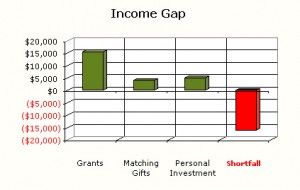
“We had raised enough money to cover the recording session orchestra payroll, but still needed $16,000 to cover the remaining expenses.”
With the grant and the pledge from Dean Casey, the momentum continued with responses from some of the letters that Sylvie had helped me to write and from several Board Members from Chicago Philharmonic. We had raised enough money to cover the recording session orchestra payroll, but still needed approximately $16,000.00 to cover the remaining expenses.
My wife, Laura, suggested that we host a private soiree at our home with the intention of asking our contacts and potential donors, largely people from our neighborhood community, to consider becoming involved. She is a professional violinist who is always eager to have a party. It was the perfect combination—food and music! We sent out invitations entitled “Bach, Boen, and Brahms” and hosted a group of 45 in our home in mid-April—six weeks before the concert and recording session. We hired a caterer to ensure that our focus for the evening would be fundraising and performing, not playing the role of perfect host and hostess.
We began by performing the Brahms Horn Trio with our talented friend, pianist Melody Lord, in our living room, and we concluded with a commentary by Jan Bach which included the fascinating process of composing Horn Concerto. I played sections of the concerto with piano accompaniment provided by my former student, Tim Lenihan, and part of the French Suite for solo horn.
with our talented friend, pianist Melody Lord, in our living room, and we concluded with a commentary by Jan Bach which included the fascinating process of composing Horn Concerto. I played sections of the concerto with piano accompaniment provided by my former student, Tim Lenihan, and part of the French Suite for solo horn.
The response was wonderful. Most people had been to concerts before, but the home setting, appetizers, and conversation with the composer was a unique experience. No tickets were sold, and all contributions were entirely voluntary. Several sponsors had matching employee programs. The risk of absorbing the catering cost paid off as we made about $4,500.00 that evening. Later, a few more contributions materialized to get us within $8,000.00 of our goal. The remaining expenses that needed to be covered were:
- Editing
- Mastering
- CD insert
- Cover art
- Initial pressing fees
Preparing To Record
I had become very focused on fundraising, but still was keenly aware of the need to practice. Aside from being a very technically demanding work, at forty minutes, it requires extreme endurance. Through many years of Wagner operas, I’d learned that stamina is achieved through long hours of practice—no short cuts. I began practicing in earnest after the holidays and didn’t let up until after the recording session. My daughter, Olivia, can attest to this fact because she is still able to sing several different passages from the concerto to this day.
When it came time rehearse with the orchestra at the end of May, I was prepared. But the orchestra was practically sight reading because the music was not available until one day prior to the first rehearsal. Unbeknownst to me, a misunderstanding regarding the rental fees and recording rights developed between the publisher and Chicago Philharmonic. This was eventually resolved, but only in time to leave left four days for the orchestra members to learn their parts. Composers who would like to maintain more control with their works might want to consider the self-publishing options that are available today.
This difficult, unknown contemporary concerto would have to be perfected in a short amount of time. The horn section met separately to rehearse the antiphonal calls and the concluding “Jan” session
and the concluding “Jan” session when all four horn players join the soloist in front of the stage and volley jazz figures back and forth. Although conductor Larry Rachleff was very adept at shaping the accompaniment, tensions were mounting with everyone involved as the first complete run through would take place at the concert. Once again, my wife Laura had a great idea that involves music and food—throw a party for the orchestra after the concert. Everyone likes to be appreciated for their efforts and musicians are no exception.
when all four horn players join the soloist in front of the stage and volley jazz figures back and forth. Although conductor Larry Rachleff was very adept at shaping the accompaniment, tensions were mounting with everyone involved as the first complete run through would take place at the concert. Once again, my wife Laura had a great idea that involves music and food—throw a party for the orchestra after the concert. Everyone likes to be appreciated for their efforts and musicians are no exception.
We decided to provide a post-concert champagne reception backstage that included fantastic cakes from a premier bakery located in Chicago for the performers as a “thank you” for all of the extra practicing and their exemplary playing in pulling off this concert. We could see the smiles before the concert as the musicians walked by the large cakes and buckets of champagne on ice being set up backstage. The live performance was terrific!
Recording the Piece
A three-hour recording session with the orchestra was scheduled two days after the concert; but with breaks, the actual recording time amounted to only 2 ½ hours. Although the concert had been recorded, the producer had decided that hall ambience and audience noise precluded us from using any of the live material for the CD. We needed to cover 43 minutes of music in this recording session, so the pacing would be extremely important. Larry, Konrad, and Jan kept the session moving along, and managed to make sure that the Gala Fanfare wasn’t neglected.
Larry’s extraordinary rehearsal technique infused with humor kept a potentially tense atmosphere manageable, beginning with the time consuming events of late arrivals
kept a potentially tense atmosphere manageable, beginning with the time consuming events of late arrivals , numerous ensemble issues that needed to be addressed due to the limited amount of preparation time, late music availability before the concert, and even a problematic page turn
, numerous ensemble issues that needed to be addressed due to the limited amount of preparation time, late music availability before the concert, and even a problematic page turn . Eventually, all sections of the Gala Fanfare and Horn Concerto were successfully recorded during those 2 ½ hours. The orchestra feasted on leftover cake (no champagne!) and I continued the recording session alone for another 20 minutes by playing the cadenzas from the first and final movement
. Eventually, all sections of the Gala Fanfare and Horn Concerto were successfully recorded during those 2 ½ hours. The orchestra feasted on leftover cake (no champagne!) and I continued the recording session alone for another 20 minutes by playing the cadenzas from the first and final movement , and took another shot at the treacherous multiphonic final note of the second movement
, and took another shot at the treacherous multiphonic final note of the second movement .
.
With the major part of the recording and fundraising behind me, I could focus on the remainder of the project. Jan’s Helix , Four 2-Bit Contraptions
, Four 2-Bit Contraptions and French Suite
and French Suite still needed to be recorded. I also needed a 16-page CD insert and a disk manufacturing and packaging company, and I needed to raise more money. My friend and colleague, Steve Lewis, was able to secure excellent donated spaces to record the final selections. It took me approximately six months to coordinate players, engineers, space availability, and rehearsals to complete the recording.
still needed to be recorded. I also needed a 16-page CD insert and a disk manufacturing and packaging company, and I needed to raise more money. My friend and colleague, Steve Lewis, was able to secure excellent donated spaces to record the final selections. It took me approximately six months to coordinate players, engineers, space availability, and rehearsals to complete the recording.
I would not have had the direction and focus without the incredible support and advice about marketing and production from my boss and friend, Jim Palermo, Artistic and General Director of the Grant Park Music Festival. Additionally, several key contacts came forward to help finalize the CD with gifts in kind.
I did not recall, but was reminded that on the evening of our soiree, that a close friend of Olivia’s violin teacher who owned his own CD manufacturing business had volunteered to press the discs and print the booklets at cost. I was elated by this generous offer.
Also present at our party in April were family friends Pam and Benny Kende who provided photography and graphic layout at a very reasonable cost. My fundraising needs had decreased through their generosity to the point that I was able to absorb the final expenses, including donating my solo fee back to the orchestra—a small price for the realization of my dream of bringing a new concerto to life and recording it for posterity.
Conclusions
In the end, this experience has helped me to understand the complexities involved with creating a major composition along with producing a professional recording. The process has also demonstrated the importance of reaching out beyond the comfort zone of professional musicians in order to generate active interest and support in the creative side of individual professional musicians.
It is hard to image that Betty Butler would have found a suitable artistic outlet if the series of events which brought her in contact with this project had not taken place. I hope that the Horn Concerto will become well known as it deserves a place in the solo horn literature. I will continue to pursue opportunities for further performances by sending copies of the CD to critics, conductors, artistic administrators, and colleagues.
I also hope that the example of personally becoming involved in a project like this will help to encourage other people in the arts to accept the inherent risks involved with following their own dream of producing a CD, concert, or video. I personally believe that classical music is alive and well and that we will be inspired to continue pushing forward in our endeavors.
Currently, the Music of Jan Bach recording was officially released in August, 2006, through Equilibrium Records. The CD is available directly through Equilibrium and is distributed by the Independent Online Distribution Alliance (IODA) at online music outlets such as Amazon .com, CDUniverse, and Napster.

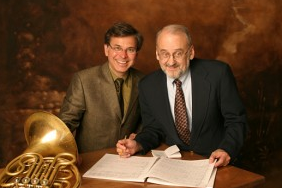
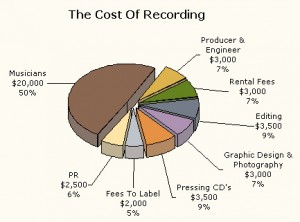
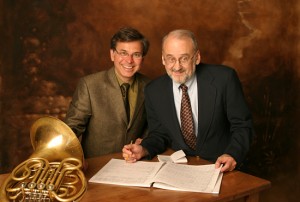
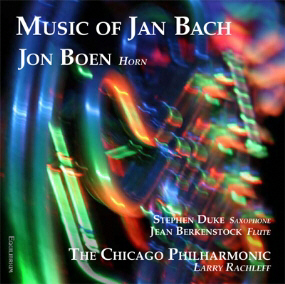
No comments yet.
Add your comment